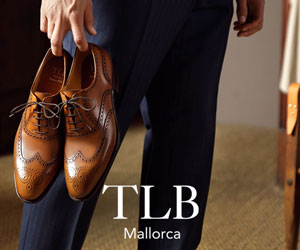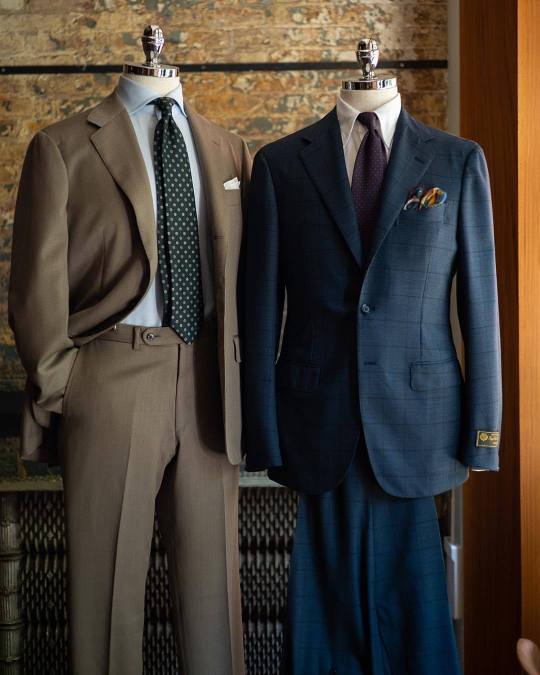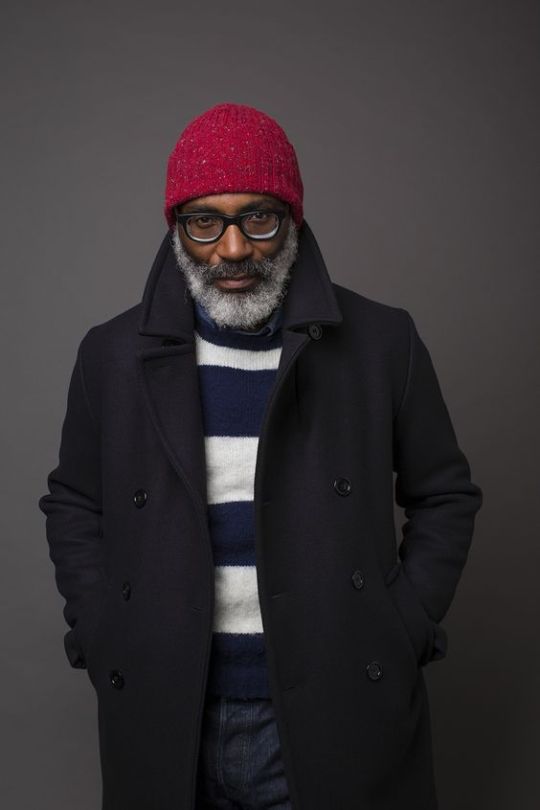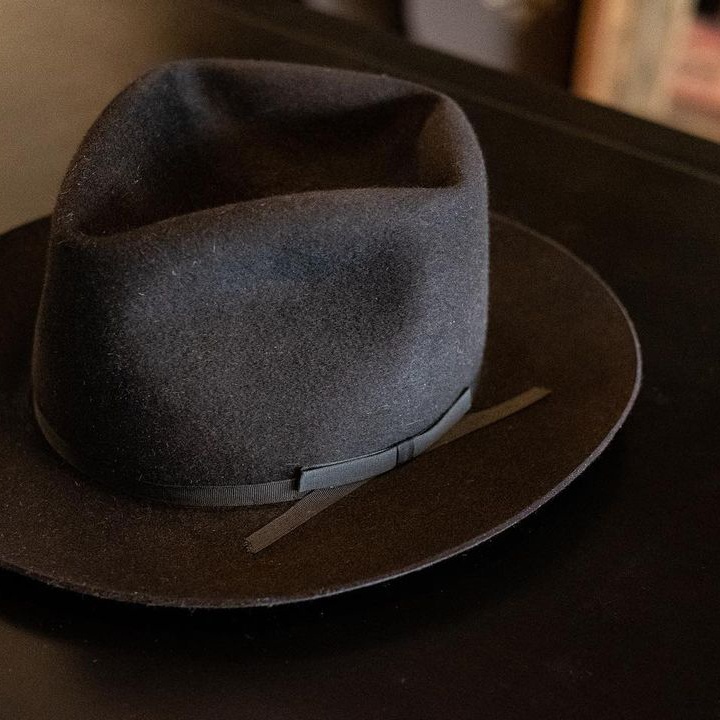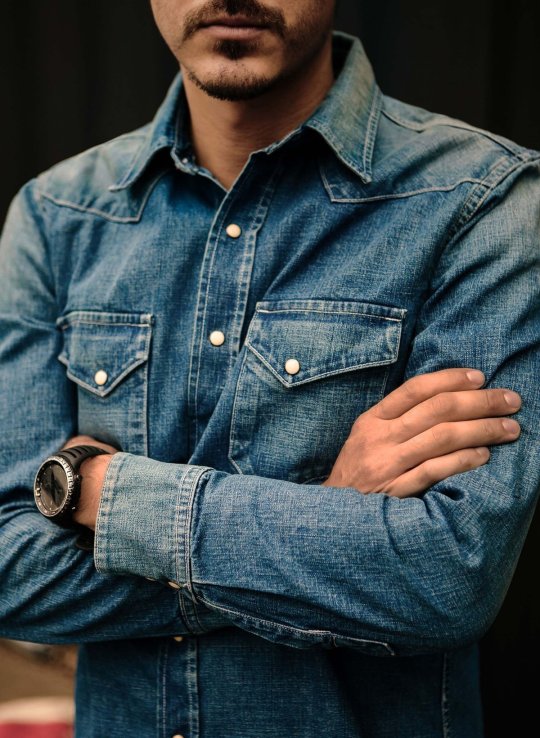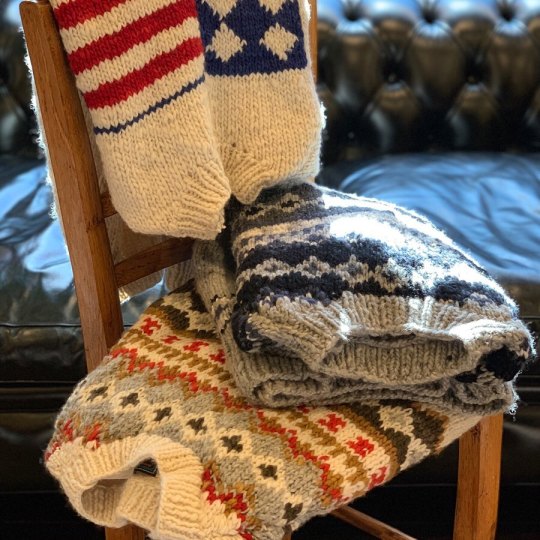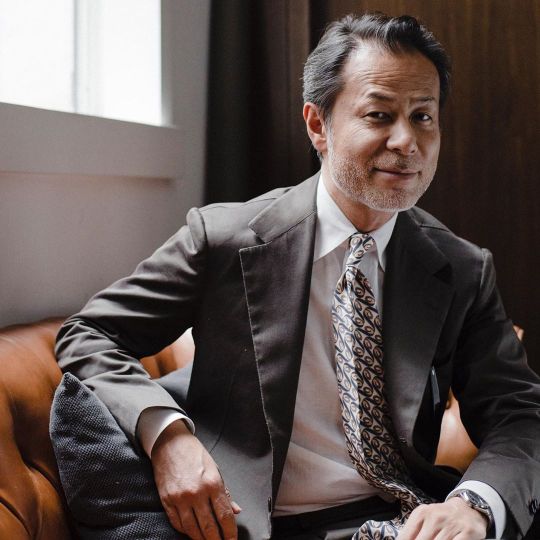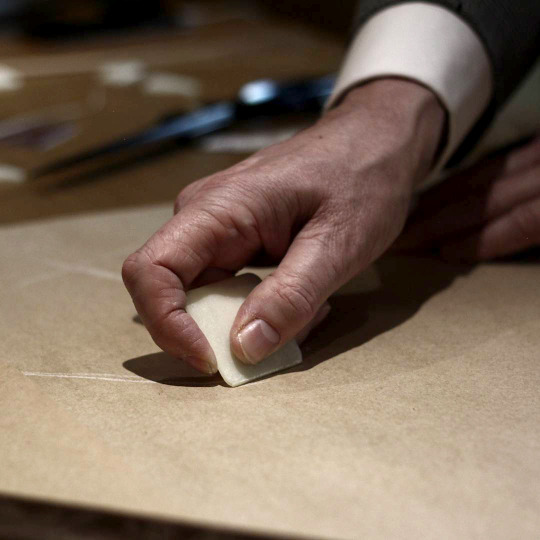
I was recently having a discussion with my friend Voxsartoria about whether there’s a practical difference between bespoke and high-end ready-to-wear. He thinks the difference is not only night-and-day but claims he can tell when someone is wearing something that was made for them. I don’t believe him.
Writers who cover bespoke tailoring will often breathlessly swoon about the Old World fitting rooms on Savile Row and how it feels to have a tailor stretch measuring tape across your shoulders. In the foreward of Anderson & Sheppard’s vanity book, A Style is Born, Graydon Carter says a client’s bespoke pattern is more honest than any autobiography (Carter’s foreward is beautifully written, but not that critical or technical). On the topic of whether bespoke lends any advantages, one of the most sensible and grounded articles I’ve read is by David Isle, which was published some years ago at No Man Walks Alone (a sponsor on this site).
As David notes, comparisons between bespoke and ready-to-wear tailoring are usually complicated by “different makers, different fabrics, different wearers and all manner of other variables that could matter.” In his post, he compares a RTW Formosa sport coat to a bespoke one, both made in the same workshop, according to the same standard, and with the same fabric. The only difference here is that the RTW jacket is cut from a standard pattern and made-up as a finished jacket, whereas the bespoke one is cut from David’s pattern and refined through a series of two fittings.
Keep reading

